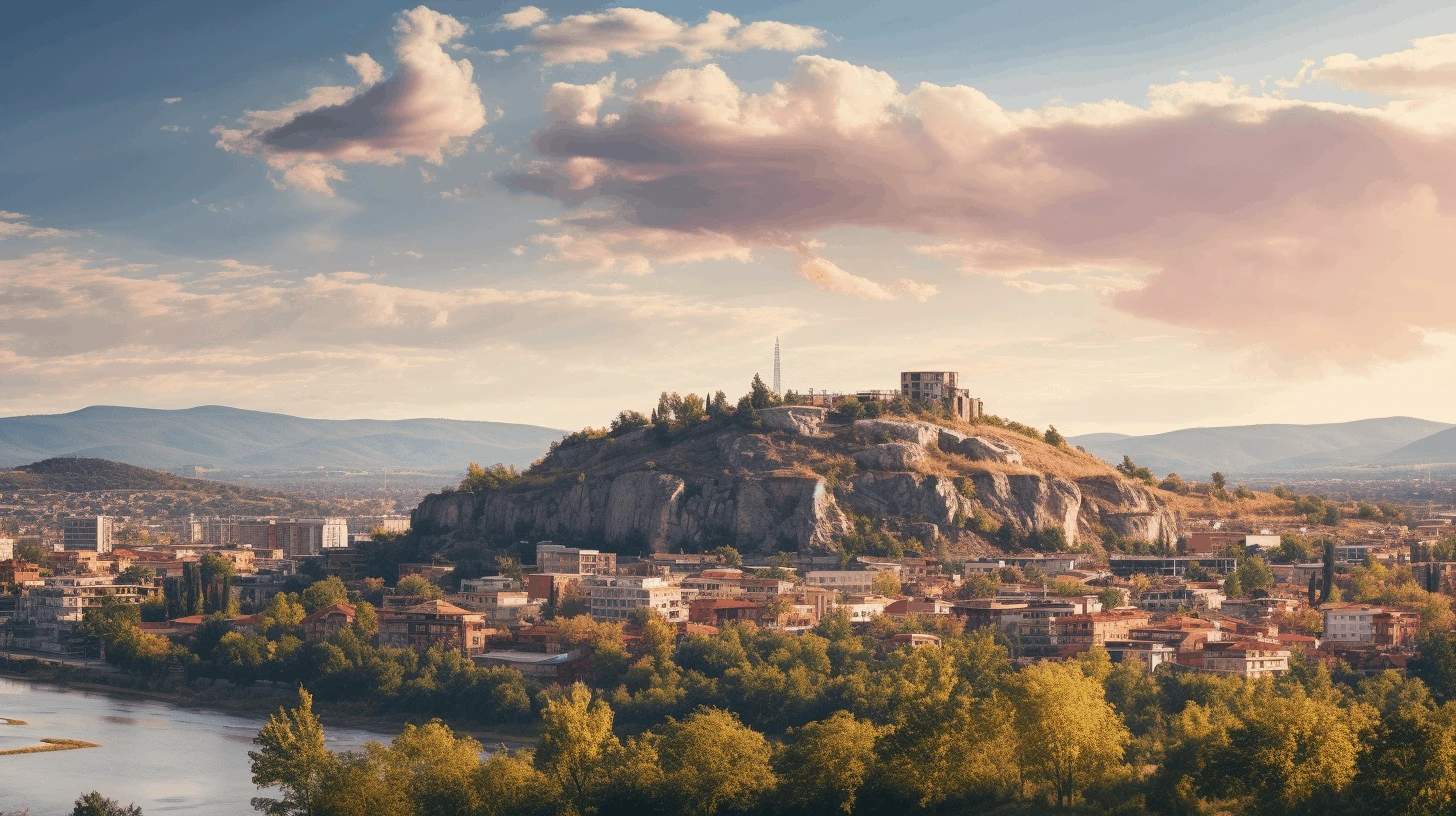
Prayer times in North macedonia
9:56 AM • +01:00 GMT
Payer Times for Cities in North macedonia
| City | Fajr | Sunrise | Dhuhr | Asr | Maghrib | Isha |
|---|---|---|---|---|---|---|
| Bitola | 05:21 | 07:00 | 11:39 | 14:00 | 16:18 | 17:51 |
| Gostivar | 05:24 | 07:04 | 11:40 | 13:59 | 16:17 | 17:52 |
| Kumanovo | 05:21 | 07:02 | 11:37 | 13:55 | 16:13 | 17:48 |
| Ohrid | 05:23 | 07:02 | 11:41 | 14:02 | 16:20 | 17:53 |
| Prilep | 05:20 | 07:00 | 11:38 | 13:58 | 16:16 | 17:50 |
| Skopje | 05:22 | 07:02 | 11:38 | 13:56 | 16:14 | 17:49 |
| Strumica | 05:16 | 06:56 | 11:33 | 13:53 | 16:11 | 17:45 |
| Tetovo | 05:24 | 07:04 | 11:40 | 13:58 | 16:16 | 17:51 |
| Veles | 05:20 | 07:00 | 11:37 | 13:56 | 16:14 | 17:48 |
| Štip | 05:18 | 06:59 | 11:35 | 13:54 | 16:12 | 17:47 |
Prayer Times of Others Cities in North macedonia
About North macedonia
Nestled in the heart of the Balkan Peninsula, North Macedonia is a captivating blend of history, culture, and natural beauty. Officially known as the Republic of North Macedonia, this landlocked nation in Southeast Europe shares its borders with Kosovo to the northwest, Serbia to the north, Bulgaria to the east, Greece to the south, and Albania to the west. It spans an area of approximately 25,713 square kilometers and is home to around two million people, thus making it one of the smaller nations in Europe. The capital and largest city, Skopje, serves as the political, economic, and cultural hub of the nation. Macedonian is the primary language spoken, and the currency is the Macedonian denar. With an abundance of mountains, valleys, and rivers, North Macedonia offers some truly remarkable scenery. This diverse landscape also provides plenty of opportunities for outdoor activities such as hiking, skiing, and fishing. The country's rich and storied history, dating back to the time of Alexander the Great, is evident in its many historical and archaeological sites, including ancient city ruins, Orthodox monasteries, and Ottoman-style architecture. North Macedonia's culture is deeply rooted in its history, with a strong influence of Roman, Byzantine, and Ottoman traditions. This can be seen in everything from its folkloric music and dance, to its cuisine, which is a blend of Mediterranean and Balkan flavors. As for the economy, it's largely service-based, supplemented by agriculture and industry sectors, with a significant focus on the export of wine, tobacco, and textiles.